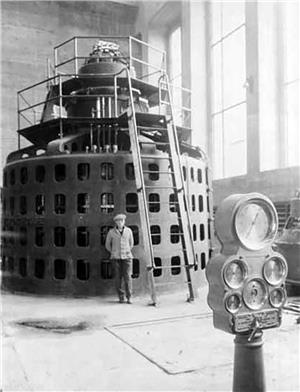On September 14, 1924, hydroelectric power from Seattle City Light's Gorge Powerhouse on the Skagit River in southeast Whatcom County reaches Seattle. Thirteen days later, on September 27, President Calvin Coolidge (1872-1933) presses a gold telegraph key in Washington, D.C., which begins formal operation of a generator that produces 30,000 kilowatts of electricity.
The project began in 1919 and went over-schedule and over-budget, costing a total of $13 million. Originally, a concrete dam was planned, but this proved to be too expensive. A temporary wood structure was erected instead to direct water into a two-mile tunnel drilled out of solid rock. The tunnel connected to a powerhouse where two more generators were eventually installed.
Ring, Ring
During construction, the power lines had been used for a telephone system. When the power system was first tested, all the telephones on the project rang. Once this problem was solved, operators had to learn how to supply an even current to customers 100 miles away.
If the water flow increased, generators worked faster, causing light in Seattle to glow brighter and motors to run faster. When the flow decreased, lights would dim. When meters malfunctioned, operators used a light bulb to visually gauge the current.
The Kite Bug
Once, a kite string shorted out transmission cables and interrupted power. On another occasion, pigeons shorted out a line, which fell, broke a telephone line, and started a forest fire.
In 1950, a concrete diversion dam replaced the wood dam. A fourth generator was added to help produce a total of 119,700 kilowatts of electricity.

